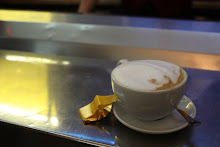I actually got excited when I got to draw the sternocleidomastoid since it is a muscle I have SEEN on models in figure drawing class. It's a muscle that is clearly visible on Michelangelo's exaggerated ignundi and his David and other renaissance depictions of the ideal man. When the head twists in such a way you can see its contraction and tension.

(my own "illegal" pic of Michelangelo's David from this past spring when I was in Florence! Check out the sternocleidomastoid muscle that goes from his ear (mastoid process area) to the top of his breast bone (sternum) incredible.....)
It's one of those muscles that bulges forth from beneath the skin--defining itself against the rest of the ordinary flesh. It is beatiful in form--and it is just as beautiful in function. As the incredibly long name suggests it has many attachment points (sterno = sternum, cleido = clavicle, mastoid = mastoid proceess of temporal bone). And with all these attachments, it can do wonders when it contracts. Just try tilting your head forward, then back, and then from side to side: all of those movements use one or both sternocleidomastoid muscles (with some others) it's versitality is remarkable.
Speaking of drawing.... after lab I was still trying to figure out the deep muscles of the hip that we had "seen" on the cadaver (the UGSI pointed them out but I was clueless!) I decided to draw the muscles and got carried away and voila the leg! We haven't officially learned the muscles bellow the iliacus but it was fun to draw them all out anyway. Legs are so complex to draw that just seeing the muscles helps it make so much sense. Leonardo's sketches incorporate beauty while retaining incredible scientific accuracy. wow.



No comments:
Post a Comment